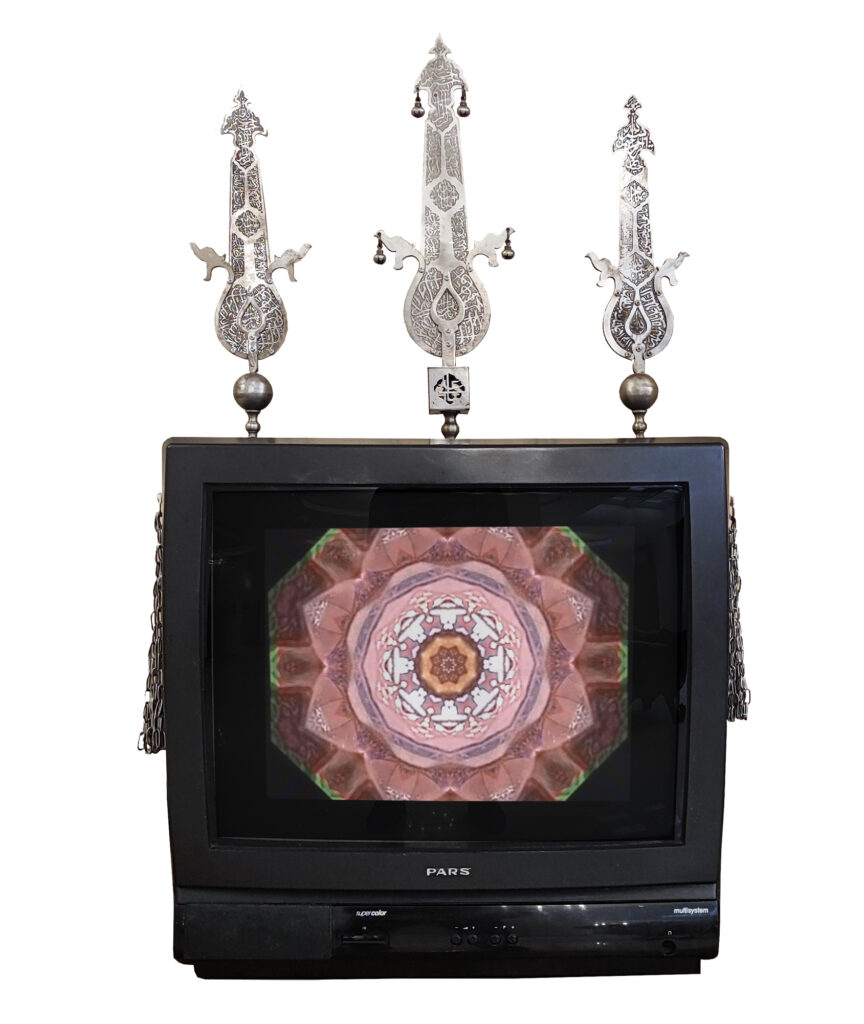video-art
by Ali Ettehad
2004
Between 2002 and 2003, Ettehad, during his travels across Iran, recorded videos of domes, fountains, tile-work, weavings, colorful Iranian fabrics, inscriptions, and ancient historical texts. These images were eventually placed within a kaleidoscope, and the output transformed into an analog video. This video was showcased on a vintage television. Decorative elements from Iranian ritualistic traditions were added to the video. This video art was first exhibited in Tehran in 2004.
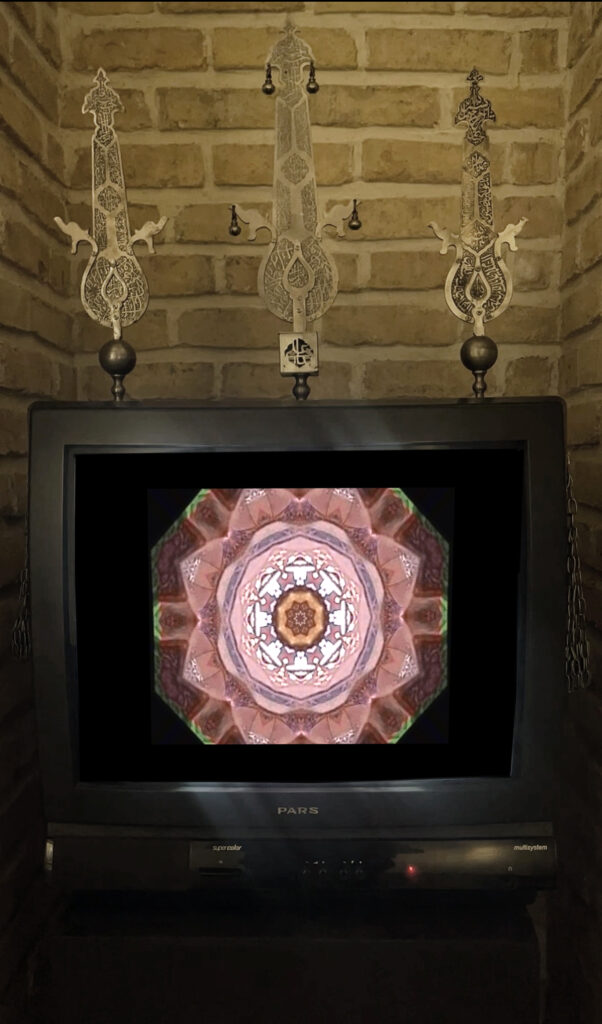
In this work, the chains are installed like the ears or hair of the television. The metal blades, on the upper part of the television, represent the Iranian Cypress trees.
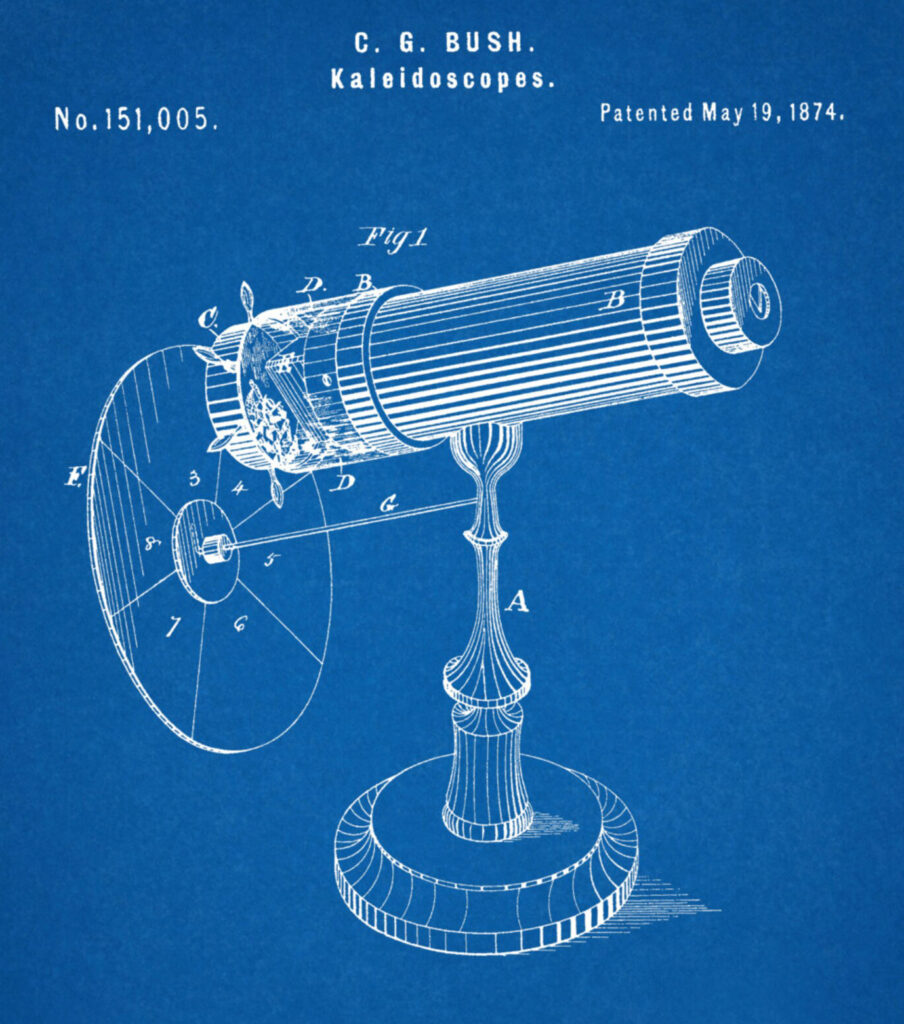
TELEKALEIDOSCOPE:
The word kaleidoscope originates from the Greek words “kalos” (meaning beautiful) and “skopein” (meaning to look or observe). Initially referring to a device invented in the early 19th century that creates shifting patterns of colors and shapes through mirrors, the term has since evolved to represent the concept of constantly changing, dynamic patterns or perspectives. In a broader sense, kaleidoscope now symbolizes the idea of ever-evolving experiences or views, where diverse elements come together to form new, multifaceted realities. The word evokes a sense of continuous transformation and complexity, making it a powerful metaphor in both artistic and philosophical contexts.
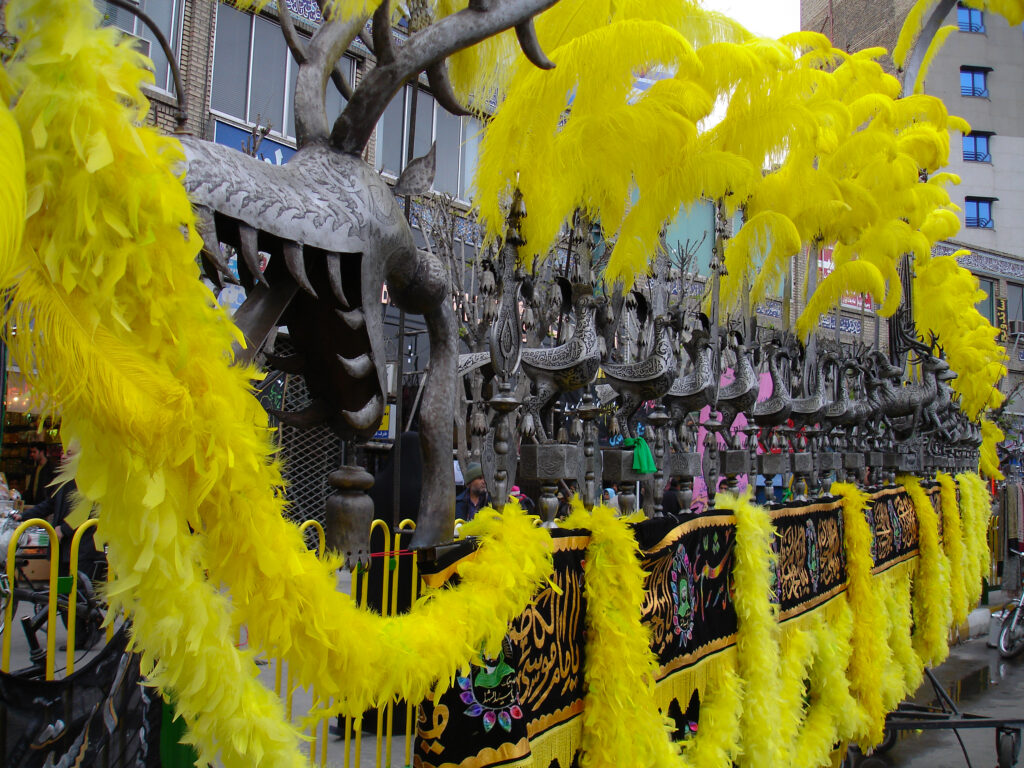
The alam is one of the prominent symbols in Ashura rituals, seen particularly in mourning processions and street commemorations. This symbol typically consists of a tall metal pole adorned with black or green cloths, religious inscriptions, and sometimes special decorations like mirrors and feathers. In Shi’a traditions, the alam represents guidance, sanctity, and resistance against oppression. However, this symbol has pre-Islamic roots. The large cross, which holds symbols of natural gods and the mythologies of Iran and Mesopotamia, seems to form a moving temple that invites the followers of all the ancient local religions. With a little attention, one can see the presence of Ishtar or the dragons of ancient Eastern Iran’s religions. Among all these, the image of the Iranian saru (cypress tree) is most frequently repeated.
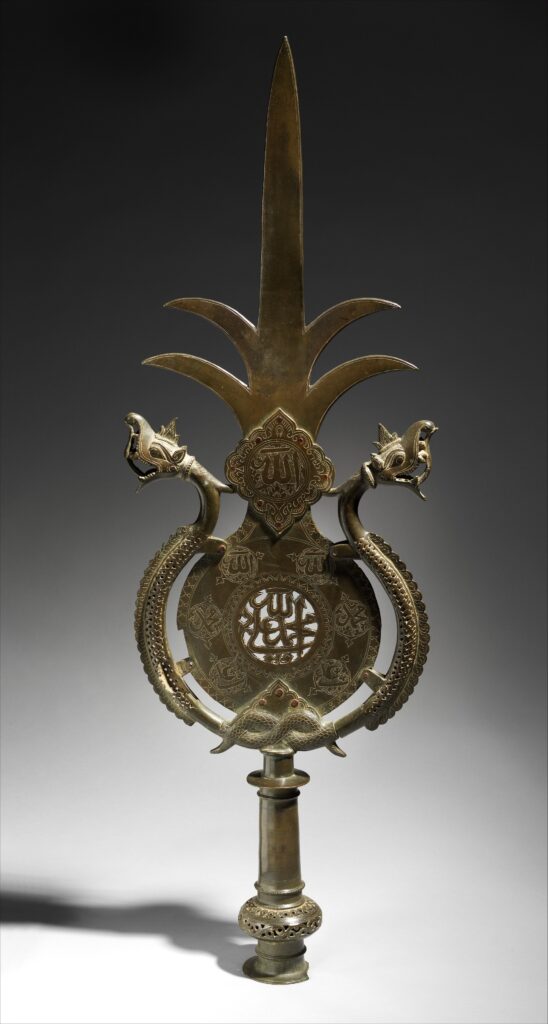
The Iranian saru, an evergreen species, can live for thousands of years. The oldest living tree in the world, the Abarkooh Cypress, is 5,500 years old. This tree, for this reason, became a manifestation of the sacred in ancient Iranian religions. Still, with its upright posture, it symbolizes eternity, invincibility against decay and erosion—everything that defines sanctity. For this reason, in religious symbolism in both Zoroastrian and Mithraic periods, the saru became a recurring symbol. This ancient symbol continued to appear in the art of the Shi’a period after the advent of Islam.
The act of zanjir (chain beating) is also an important ritual in Ashura mourning, particularly seen in mourning processions in Iran, Pakistan, and other Shi’a countries. The practice of zanjirzani is done to express sympathy and solidarity with the suffering of Hussein ibn Ali (the grandson of the Prophet Muhammad) and his companions. During the collective procession, mourners strike metal chains with their hands, sometimes synchronizing their movements to hit their bodies or the ground. This action, more than being harmful, creates rhythm.

